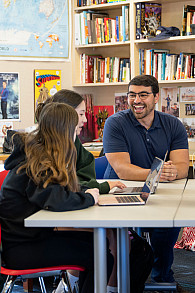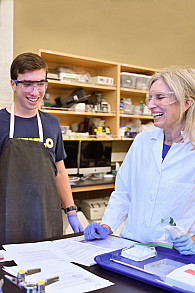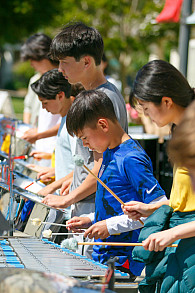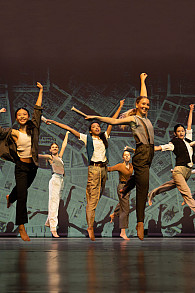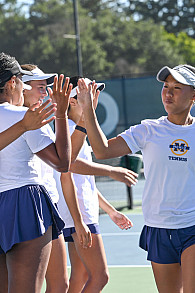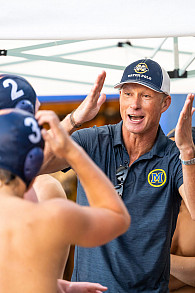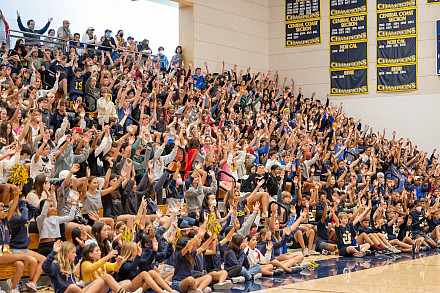- Arts
- Academics
-
Athletics
- Athletics Overview
-
Upper School Teams
- Baseball - Varsity
- Baseball - Junior Varsity
- Basketball - Boys Varsity
- Basketball - Boys Junior Varsity
- Basketball - Boys Freshman
- Basketball - Girls Varsity
- Basketball - Girls Junior Varsity
- Cross Country
- Flag Football - Girls
- Football - Varsity
- Football - Junior Varsity
- Golf - Girls Varsity
- Golf - Boys Varsity
- Golf - Boys Junior Varsity
- Lacrosse - Boys Varsity
- Lacrosse - Boys Junior Varsity
- Lacrosse - Girls Varsity
- Lacrosse - Girls Junior Varsity
- Soccer - Boys’ Varsity
- Soccer - Boys’ Junior Varsity
- Soccer - Girls Varsity
- Soccer - Girls Junior Varsity
- Swimming
- Tennis - Varsity Boys
- Tennis - Boys Junior Varsity
- Tennis - Girls Varsity
- Tennis - Girls Junior Varsity
- Track & Field
- Volleyball - Varsity
- Volleyball - Junior Varsity
- Volleyball - Freshman
- Water Polo - Boys Varsity
- Water Polo - Boys Junior Varsity
- Water Polo - Girls Varsity
- Water Polo - Girls Junior Varsity
-
Middle School Teams
- Baseball - Middle School
- Basketball - Boys Middle School
- Basketball - Girls Middle School
- Cross Country - Middle School
- Flag Football - Middle School
- Lacrosse - Boys Middle School
- Lacrosse - Girls Middle School
- Soccer - Boys Middle School
- Soccer - Girls Middle School
- Swimming - Middle School
- Tennis - Middle School
- Track - Middle School
- Volleyball - Middle School
- Athletics Philosophy & Values
- Athletics Resources
- Camps & Clinics
- Alumni Athletes
- New to Menlo Athletics?
- Student Life
- Support Menlo
- Admissions
- Calendar
- Resources
MENLO SCHOOL • SINCE 1915
Transportation
Bike & Walk
Live near campus?
Encourage your child to get some fresh air and exercise—you’ll be helping his or her health and the environment!
Benefits of Biking and Walking
- Fitness and Physical Health: While friends who drive to school are sucking air in those fitness drills, you’ll be cool as a whistle.
- Good habits: Once a couch potato, always a couch potato.
- More sleep: Become the envy of the community when you sleep in another 10 minutes and then whip by all the cars idling in traffic on Valparaiso.
- Mental health: Stress is relieved by the early morning endorphins rushing through the brain. Walking or biking provides a pleasant way to start the day filled with fresh air and an ease of mind.
- Independence: Why wait for Mom and Dad to finish their work before heading out of the house? Go where you want, when you want.
- Confidence: That’s right, I DID just face down a huge hill on my way to Menlo and left it in my dust.
- Cost savings: Make a deal with Mom and Dad. Calculate the amount of gas you save them and ask for it in your allowance.
- Environmental savings: CO 2 is pumped into the air when you drive a car to school.
- Better parent relations: Your choice to walk or bike just gave Mom and Dad a break—now maybe they’ll give you a break as well!
- Community interaction: Become “that nice boy or girl who waves to me while riding down the street” rather than “that nameless, faceless kid in the car.”
Learn more about the benefits of biking and walking here, and find tips and resources for biking here.
Tips and Resources for Biking
You can find lots of bike safety information on California’s Bicycle Rules and Safety webpage.
Safe Riding Tips
Before using your bicycle, make sure it is ready to ride. You should always inspect your bike to make sure all parts are secure and working properly. Remember to:
- Wear a properly fitted bicycle helmet. Protect your brain, save your life.
- Adjust your bicycle to fit. Stand over your bicycle. There should be 1 to 2 inches between you and the top tube (bar) if using a road bike and 3 to 4 inches if using a mountain bike. The seat should be level front to back. The seat height should be adjusted to allow a slight bend at the knee when the leg is fully extended. The handlebar height should be at the same level with the seat.
- Check your equipment. Before riding, inflate tires properly and check that your brakes work.
- See and be seen. Whether it’s day or night, dawn or dusk, sunny or gray, you need to be seen by others. Wearing white has not been shown to make you more visible. Rather, always wear neon, fluorescent or other bright colors when riding day or night. Also wear something that reflects light, such as flashing lights or reflective tape or markings. Remember, just because you can see a driver doesn’t mean the driver can see you.
- Control your bicycle. Always ride with at least one hand on the handlebars. Carry books and other items in a bicycle carrier or backpack.
- Watch for and avoid road hazards. Be on the lookout for hazards such as potholes, broken glass, gravel, puddles, leaves and dogs. All these hazards can cause a crash. If you are riding with friends and you are in the lead, yell out and point to the hazard to alert the riders behind you.
- Avoid riding at night. It is far more dangerous to ride at night than during the day because you are harder for others to see. If you have to ride at night, wear something that makes you more easily seen by others. Make sure you have reflectors on the front and rear of your bicycle (white front reflectors and red rear reflectors are required by law in many states), in addition to reflectors on your tires. Many bicycle-related crashes resulting in injury or death are associated with the bicyclist’s behavior, including such things as not wearing a bicycle helmet, riding into a street without stopping, turning left or swerving into traffic that is coming from behind, running a stop sign, and riding the wrong way in traffic. To maximize your safety, always wear a helmet AND follow the rules of the road.
Bicycling on the Road
Bicycles in many states are considered vehicles, and cyclists have the same rights and responsibilities to follow the rules of the road as motorists. When riding, always:
- Go with the traffic flow. Ride on the right in the same direction as other vehicles. Go with the flow—not against it.
- Obey all traffic laws. A bicycle is a vehicle and you’re a driver. When you ride in the street, obey all traffic signs, signals and lane markings.
- Yield to traffic when appropriate. Almost always, drivers on a smaller road must yield (wait) for traffic on a major or larger road. If there is no stop sign or traffic signal and you are coming from a smaller roadway (out of a driveway, from a sidewalk, a bike path, etc.), you must slow down and look to see if the way is clear before proceeding. This also means yielding to pedestrians who have already entered a crosswalk.
- Be predictable. Ride in a straight line, not in and out of cars. Signal your moves to others.
- Use your ears. You need to hear traffic to avoid dangerous situations: don’t wear a headset when you ride.
- Look before turning. When turning left or right, always look behind you for a break in traffic, then signal before making the turn. Watch for left- or right-turning traffic.
- Watch for parked cars. Ride far enough out from the curb to avoid the unexpected from parked cars (like doors opening or cars pulling out).
 MENLO SCHOOL Since 1915
MENLO SCHOOL Since 1915